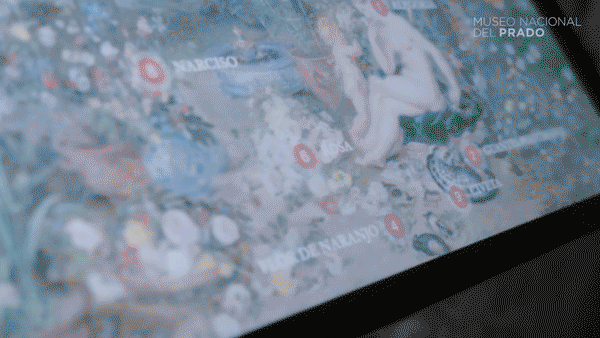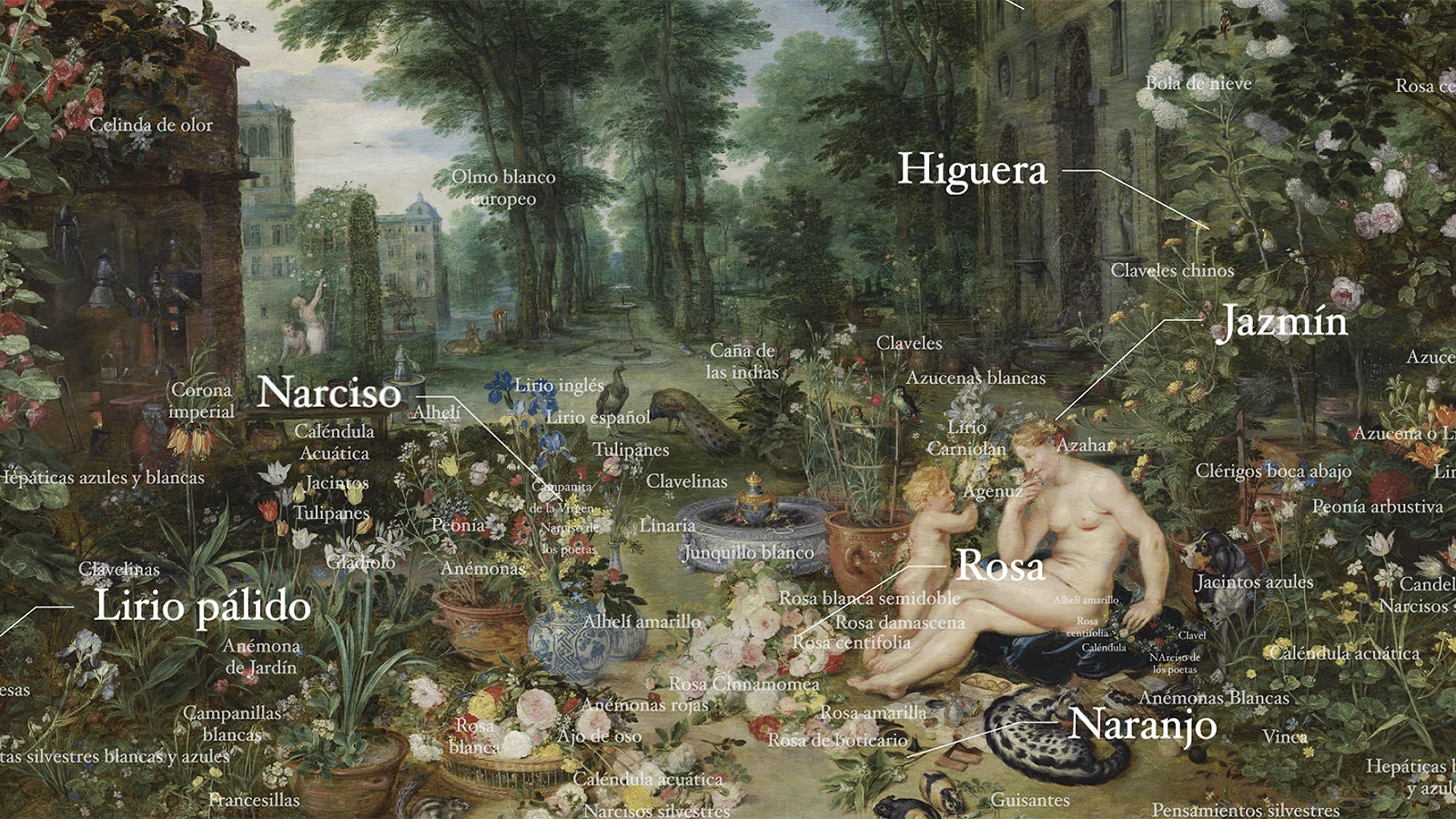Ages before immersion became its own event, Jan Brueghel and Peter Paul Rubens ventured their own capturing of human senses — allegorically speaking. Between 1617 and 1618, the pair collaborated on a group of oils, titled The Five Senses, containing metaphorical scenes that illustrate sight, smell, taste, touch, and hearing. In “The Sense of Taste,” for instance, a female figure works her way through a feast of fish and fowl, while in “The Sense of Hearing,” she’s depicted playing a lute in a room occupied with clocks and musical instruments.
And then there’s “The Sense of Smell,” wherein our female lead is joined by Cupid in a garden sowed with more than 80 species of plants and littered with objects from the world of perfume, such as scent gloves and distilling vessels. No longer just a work to be gazed at, the painting now forms the focus of Prado Museum’s new exhibition, which aims to immerse viewers in the pictured scents and smells.
What happened

The Essence of a Painting presents audiences with 10 fragrances, specially created to accompany Brueghel and Rubens’ “The Sense of Smell.” Image: © Museo Nacional del Prado
This week, the Prado Museum opens The Essence of a Painting. An Olfactory Exhibition, a show centered on Brueghel and Rubens’ “The Sense of Smell.” In the exhibition gallery, where the other works from the series are also displayed, the painting comes accompanied by 10 fragrances, specially created by perfumer Gregorio Sola and associated with elements in the artwork. Alongside the botanical scents of Fig Tree, Orange Blossom, and Jasmine, are evocative bouquets such as Spikenard and Gloves, which bring to life 17th century fragrance recipes.
The smells can be activated at four Samsung interactive touchscreens, which will diffuse the scents using AirParfum technology developed by perfume company Puig.
Why it matters

Visitors can access the scents at Samsung interactive touchscreens, which diffuse the fragrances using Puig’s AirParfum technology. Image: Museo Nacional del Prado on YouTube
The exhibition marks the first time that the Milan institution has used scent technology within its galleries — an effort that effectively reframes a painting long held in the museum’s collection. Much like the National Gallery’s ongoing Virtual Veronese, The Essence of a Painting offers a new way of seeing and experiencing older works, refreshing their onsite appeal.
While the Mauritshuis Museum has similarly deployed immersive smells as part of a 2021 exhibition, fragrance remains a lesser-used element within cultural venues compared to, say, virtual reality. This could be down to the trickiness of diffusing or containing scents in a physical space, or the resources required to develop these perfumes in the first place, but as a tool for visitor engagement, the technology is nothing to sniff at. Both the Prado and Mauritshuis have demonstrated how these scent-driven projects can be realized through savvy collaborations and, in the latter’s case, how they might present further commercial possibilities.



